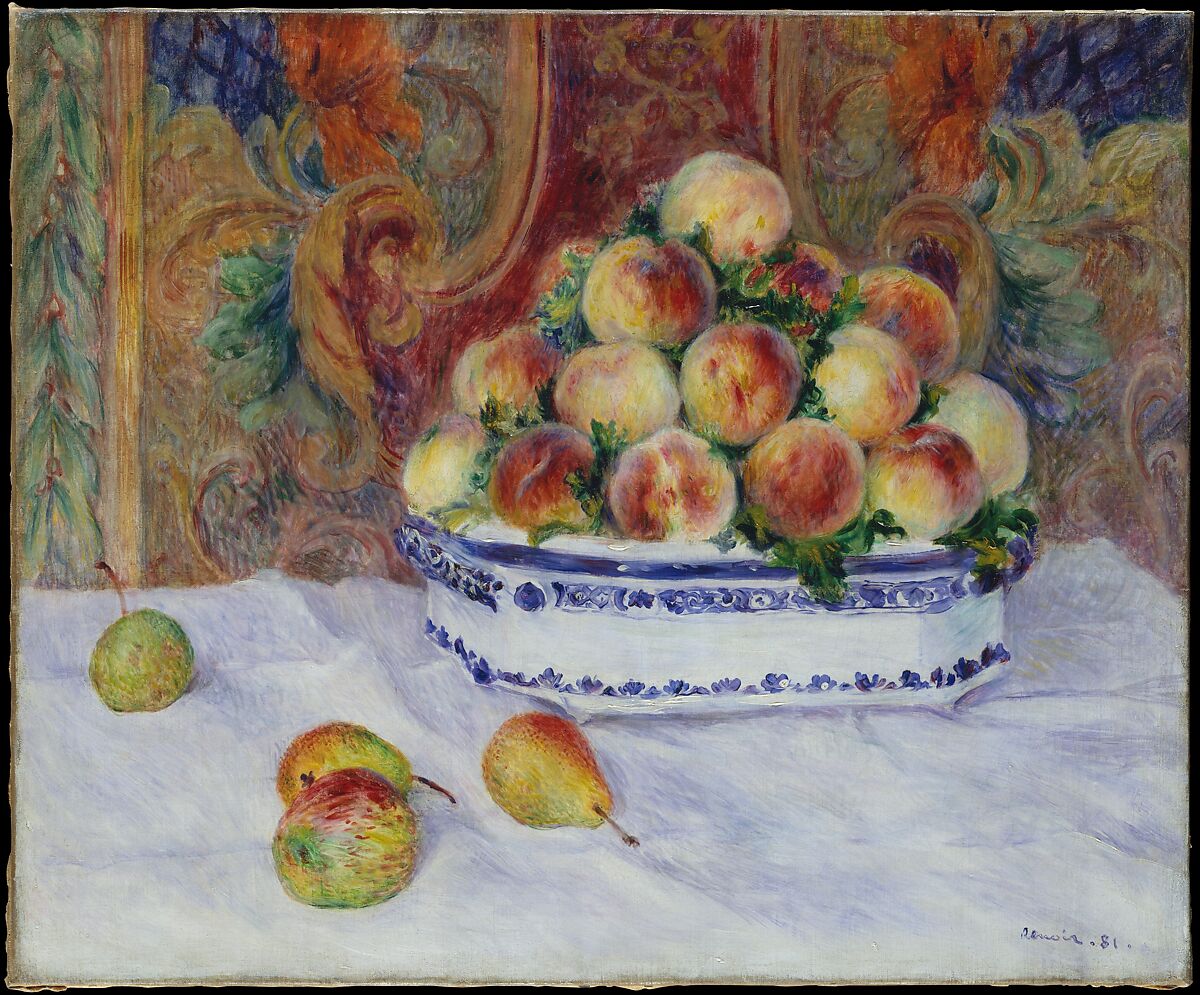Symbolism of Peaches in "Still Life with Peaches" by Pierre-Auguste Renoir

"Still Life with Peaches" by Pierre-Auguste Renoir, completed in 1881, features a grouping of peaches and pears on a table. The painting captures the soft, velvety texture of the peaches and the delicate skin of the pears.
"Still Life with Peaches" by Pierre-Auguste Renoir, completed in 1881, features a grouping of peaches and pears on a table. The painting captures the soft, velvety texture of the peaches and the delicate skin of the pears.
The peach is a fruit that has been used as a symbol in various cultures throughout history. Several symbolic meanings are associated with peaches.
In Chinese culture, the peach is a symbol of longevity and immortality. The peach tree is said to bloom every 3,000 years and the fruit of the tree is said to grant immortality to anyone who eats it.
In Western cultures, the peach is often associated with fertility and romance. This may be because of its soft, velvety texture and the fact that it is a juicy, sweet fruit. In some cultures, it is believed that eating peaches can help with conception and increase sexual desire.
In many cultures, the peach is also a symbol of prosperity and abundance. This may be because of the fruit's rich, golden color and the fact that it is often associated with harvest time. In some cultures, the peach is given as a gift to bring good luck and wealth to the recipient.
Finally, the peach is sometimes used as a symbol of innocence and purity. This may be because of the fruit's soft, delicate flesh and the fact that it is often associated with youth and beauty.
Overall, the symbolism of a peach can vary depending on the culture and context in which it is used. However, these are some of the most common symbolic meanings associated with the peach.
Image : Still Life with Peaches, Auguste Renoir (French, Limoges 1841–1919 Cagnes-sur-Mer)
